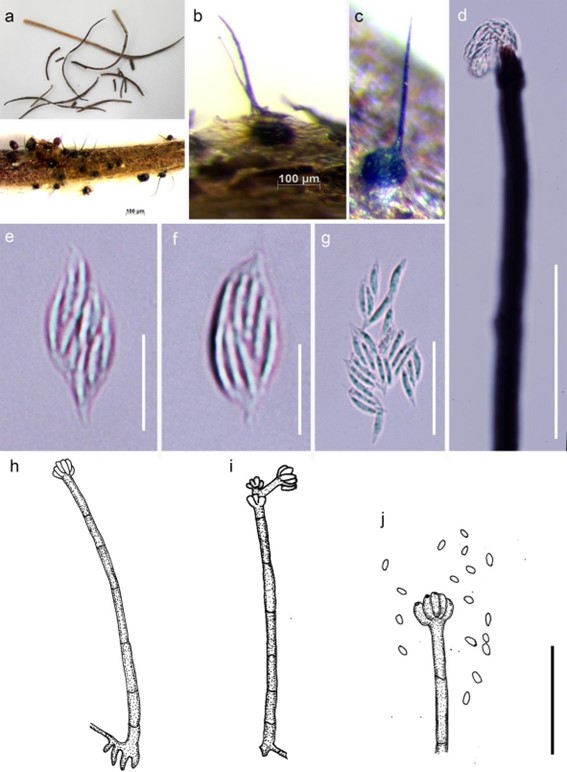Knoxdaviesia M.J. Wingf., P.S. van Wyk & Marasas, Mycologia 80(1): 26 (1988)
MycoBank number: MB 11113; Index Fungorum number: IF 11113; Facesoffungi number: FoF 06414; 9 morphological species (Species Fungorum 2020), 6 species with sequence data.
Type species – Knoxdaviesia proteae M.J. Wingf., P.S. van Wyk & Marasas
Notes – Knoxdaviesia was established for K. proteae, and the asexual morph of this species was described as Ceratocystiopsis proteae (Wingfield et al. 1988). Subsequently, Marais et al. (1998) introduced the sexual morph genus Gondwanamyces based on G. proteae to accommodate two ophiostomatoid species Ceratocystiopsis proteae (Wingfield et al. 1988) and Ophiostoma capense (Wingfield & van Wyk 1993). Gondwanamyces was characterized by black, globose to subglobose perithecia and aseptate ascospores, with or without a sheath. The asexual morph Knoxdaviesia formed phialoconidia holoblastically from obovoid conidiogenous cells. Sequence data showed that Knoxdaviesia could be accommodated in Custingophora (Kolařík & Hulcr 2009, Moubasher et al. 2017). Van der Linde et al. (2012) rejected the concept of synonymy of Knoxdaviesia in Custingophora and de Beer et al. (2013a) erected Knoxdaviesia over Gondwanamyces according to the one fungus one name protocol (Hawksworth 2011, Hawksworth et al. 2011, Moubasher et al. 2017). In this entry, Knoxdaviesia proteae is illustrated.

Figure 111 – Knoxdaviesia proteae (Material examined – SOUTH AFRICA, Cape Province, Stellenbosch, from flower within the inflorescence, infested by insects, L.J. Strauss, 7 October 1985, PREM 48924 holotype) and asexual morph redrawn from Wingfield et al. (1988). a Herbarium material. b, c Ascomata on host. d Long neck of ascomata. e, f Asci. g Ascospores. h-j Conidiophores, conidiogenous cells and conidia. Scale bars: b, c = 100 μm. d = 50 μm, g = 20 μm, e, f = 5 μm.
Species
Knoxdaviesia proteae
